A spring-mass system ( m1 + massless spring + m2) fall freely from a height h before m2 colliding inelastically with the ground. Find the minimum value of h so that block m2 will break off the surface. Assume k=stiffness of the spring.
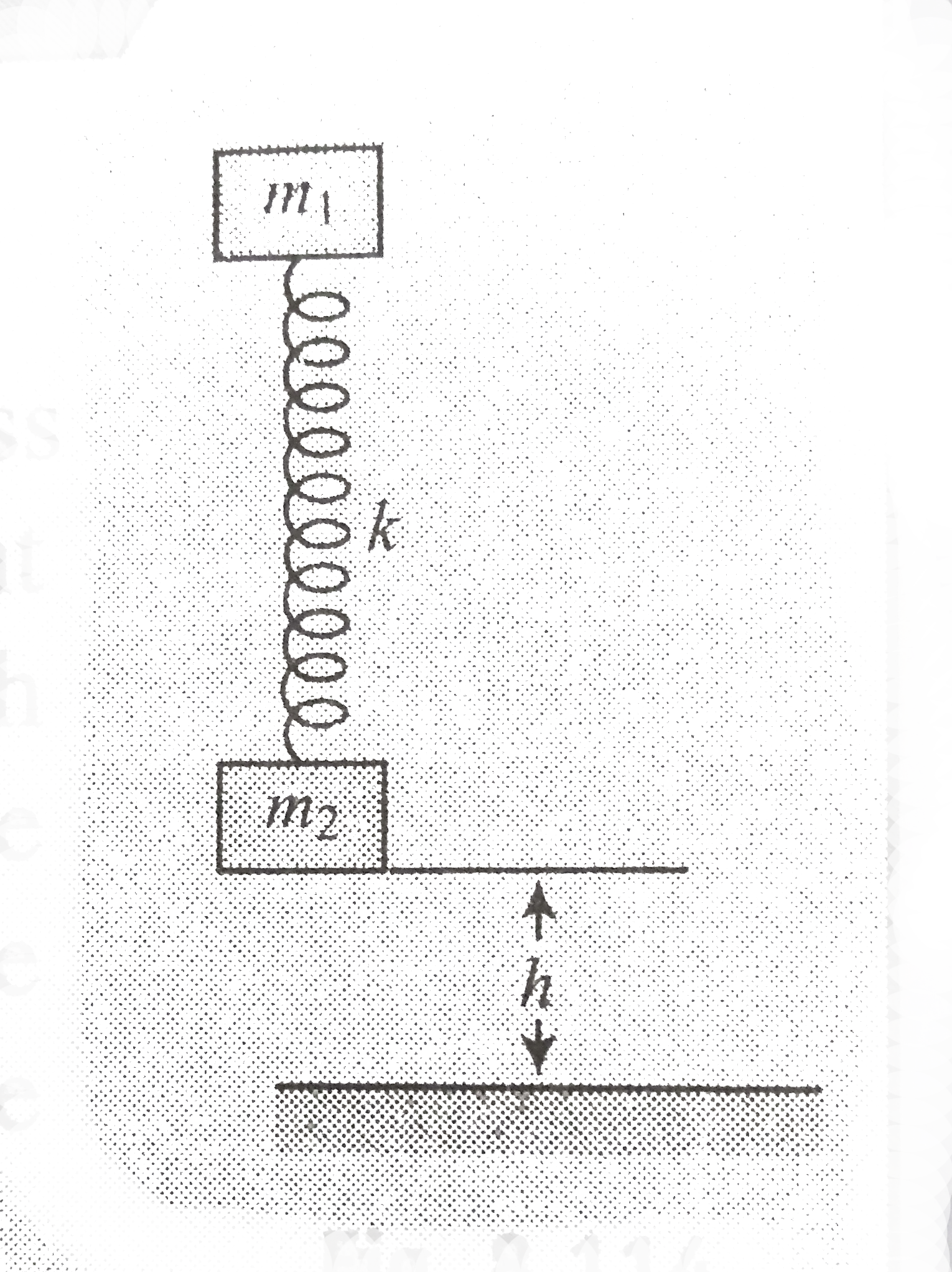
m2(2m1+m2)2m1k
Topper's Solved these Questions
- BOOK - AAKASH INSTITUTECHAPTER - WORK, ENERGY AND POWEREXERCISE - EXERCISE40videos
WORK, ENERGY AND POWER
- BOOK - AAKASH INSTITUTECHAPTER - WORK, ENERGY AND POWEREXERCISE - Assignment (SECTION - A)67videos
WORK, ENERGY AND POWER
- BOOK - AAKASH INSTITUTECHAPTER - WORK, ENERGY AND POWEREXERCISE - SECTION-I (SUBJECTIVE TYPE QUESTIONS)6videos
WORK, ENERGY AND POWER
- BOOK - AAKASH INSTITUTECHAPTER - WAVESEXERCISE - ASSIGNMENT ( SECTION-D ( Assertion - Reason Type Questions ))12videos
WAVES
Similar Questions
A spring-mass system ( m1 + massless spring + m2) fall freely from a height h before m2 colliding inelastically with the ground. Find the maximum value of h so that block m2 will break off the surface. Assume k=stiffness of the spring.
 View Solution
View SolutionA block of mass m is dropped onto a spring of constant k from a height h. The second end of the spring is attached to a second block of mass M as shown in figure. Find the minimum value of h so that the block M bounces off the ground. If the block of mass m sticks to the spring immediately after it comes into contact with it.
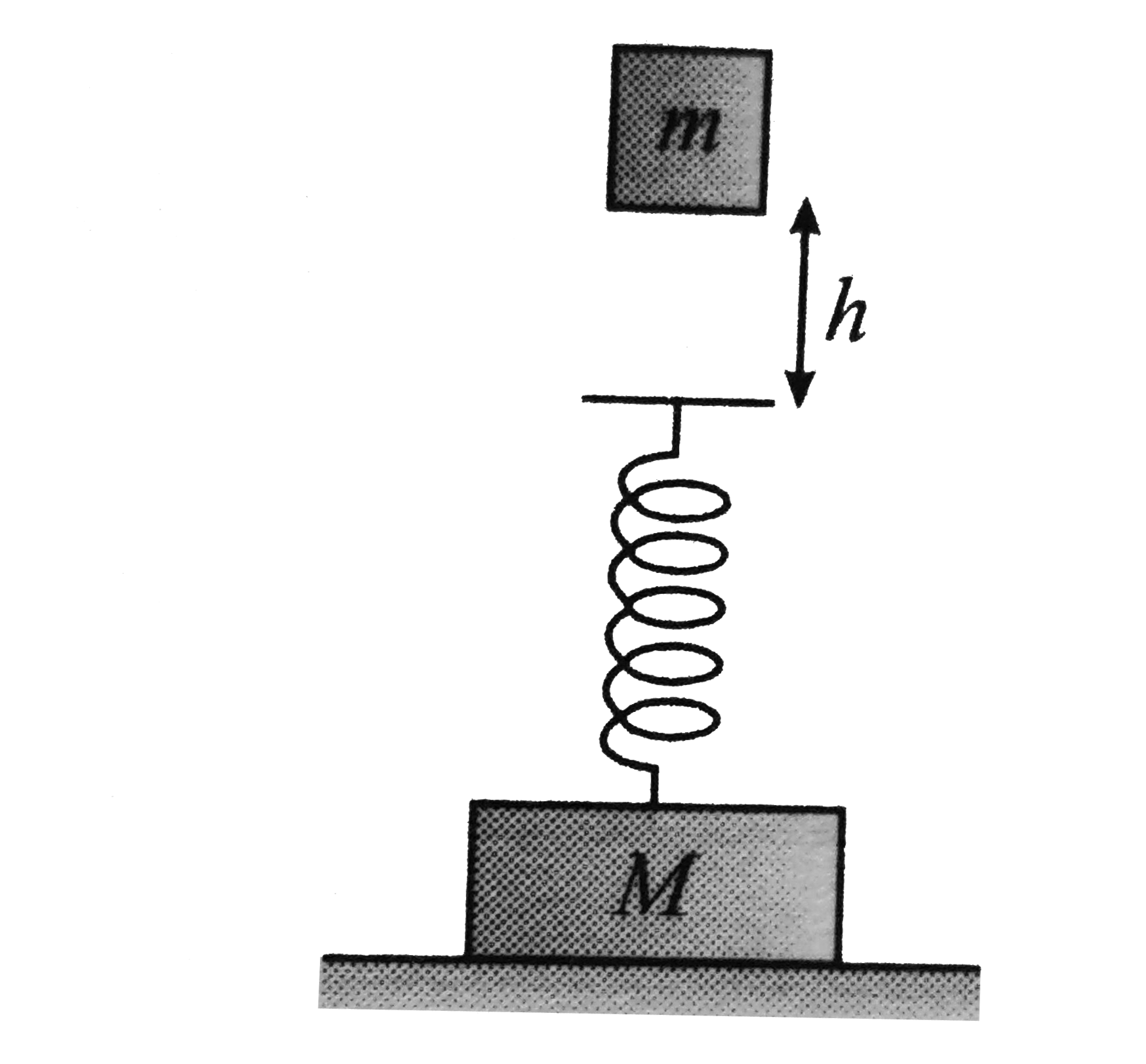 View Solution
View Solution
Knowledge Check
- Question 1 - Select One
A block of mass 'm' collides perfectly inelastically with another identical block connected to a spring of of force constant 'K'. The amplitude of resulting SHM will be
 A√mKBV√m2KCV√KmDV√2Km
A√mKBV√m2KCV√KmDV√2Km
A spring mass system is held at rest with the spring relaxed at a height (h) above the ground. Determine the minimum value of (H) so that the systen has a tendency to rebound after hitting the ground. Given that the coefficient of restitution between (m2) and ground is zero.
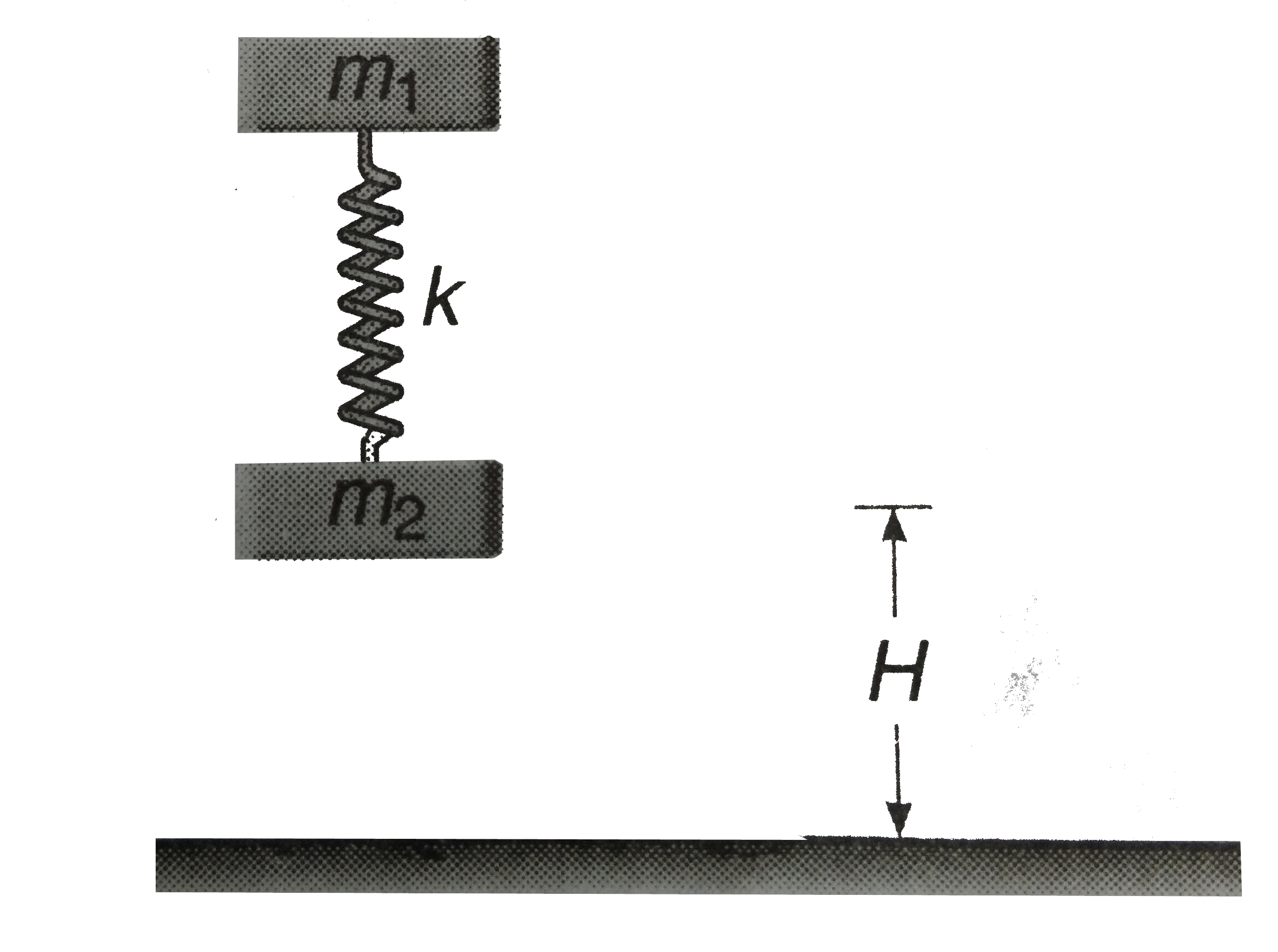 .View Solution
.View SolutionTwo spherical bodies of mass m1 and m2 fall freely through a distance h. before the body m2 collides with the ground. If the coefficient of restitution of all collisions is e, find the velocity of m1 just after it collides with m2
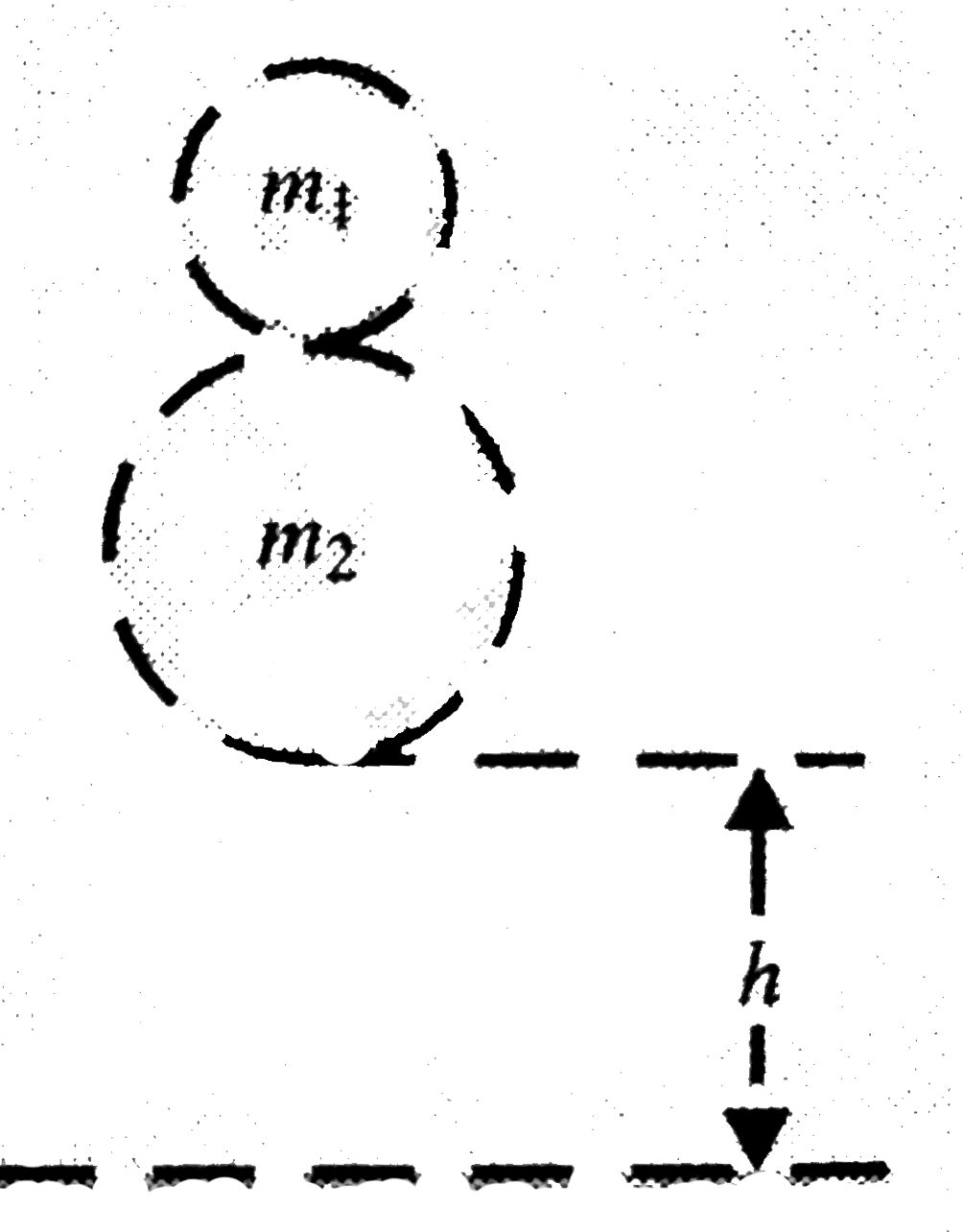 View Solution
View SolutionTwo blocks of masses m and M connected by a light spring of stiffness k, are kept on a smooth horizontal surface as shown in figure. What should be the initial compression of the spring so that the system will be about to break off the surface, after releasing the block m1?
View SolutionIn figure, the stiffness of the spring is k and mass of the block is m. The pulley is fixed. Initially, the block m is held such that the elongation in the spring is zero and then released from rest. Find:
a. the maximum elongation in the spring.
b. the maximum speed of the block m. Neglect the mass of the spring and that of the string. Also neglect the friction.
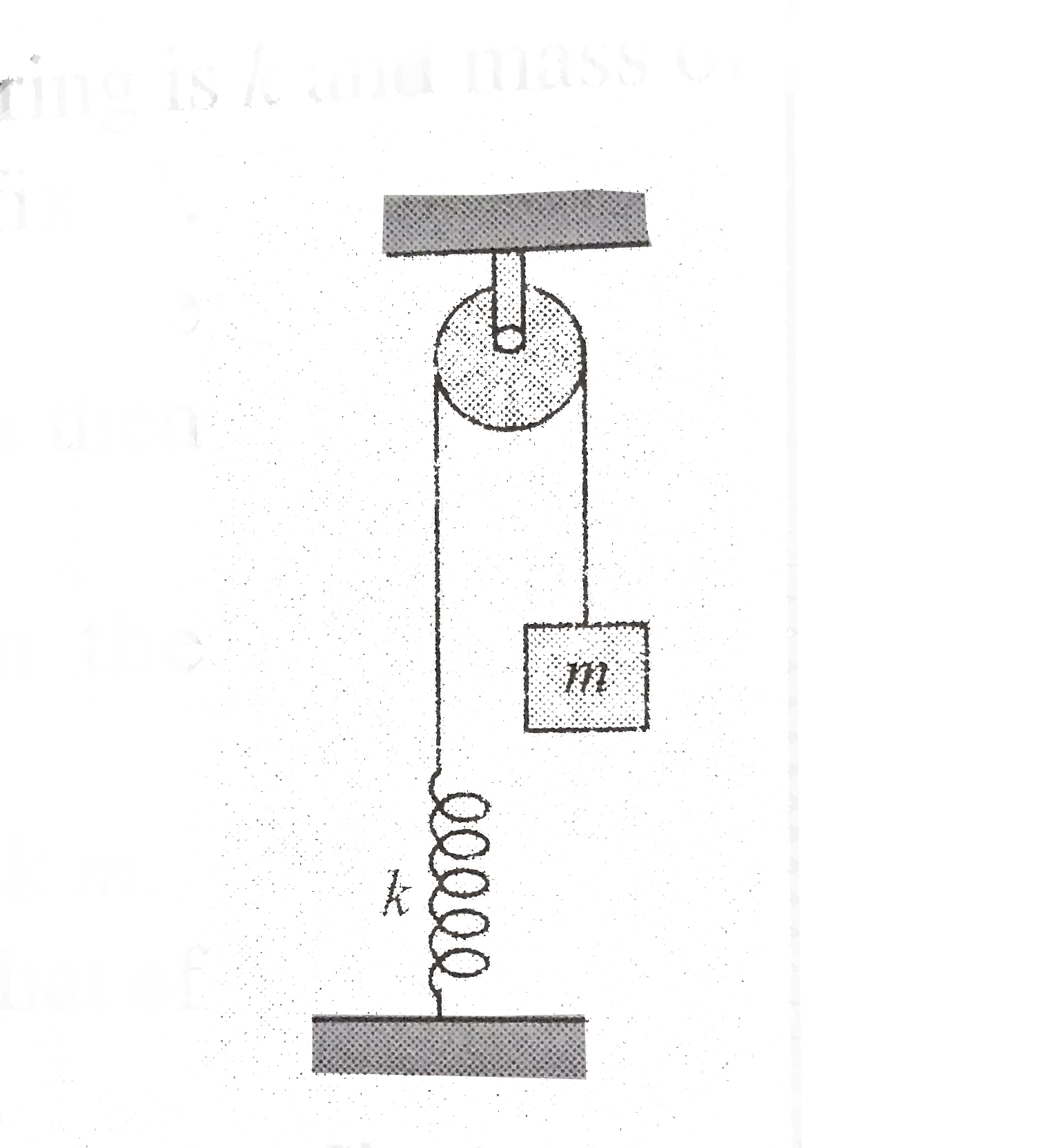 View Solution
View SolutionA block of mass 180g is placed on a spring (spring constant k=120N/m) fixed from below. A ball of mass 20g is dropped from height 20m and the collision is completely inelastic. Find the maximum compression of the spring. Neglect the initial compression of the spring due to the block.
View SolutionTwo blocks A and B each of mass m are connected by a massless spring of natural length L and spring constant k. The blocks are initially resting on a smooth horizontal floor with the spring at its natural length. A third identical block C also of mass m moves on the floor with a speed v along the line joining A and B and collides with A. Then
The kinetic energy of the A-B system at maximum compression of the spring is mv2/4
The maximum compression of the spring v√m/3k<br>Thek∈etice≠rgyoftheA−Bsystematmaxiμmcompression<br>Themaxiμmcoppressionofthespr∈gisvsqrt(m//k)View SolutionA block of mass m strikes a light pan fitted with a vertical spring after falling through a distance h. If the stiffness of the spring is k, find the maximum compression of the spring.
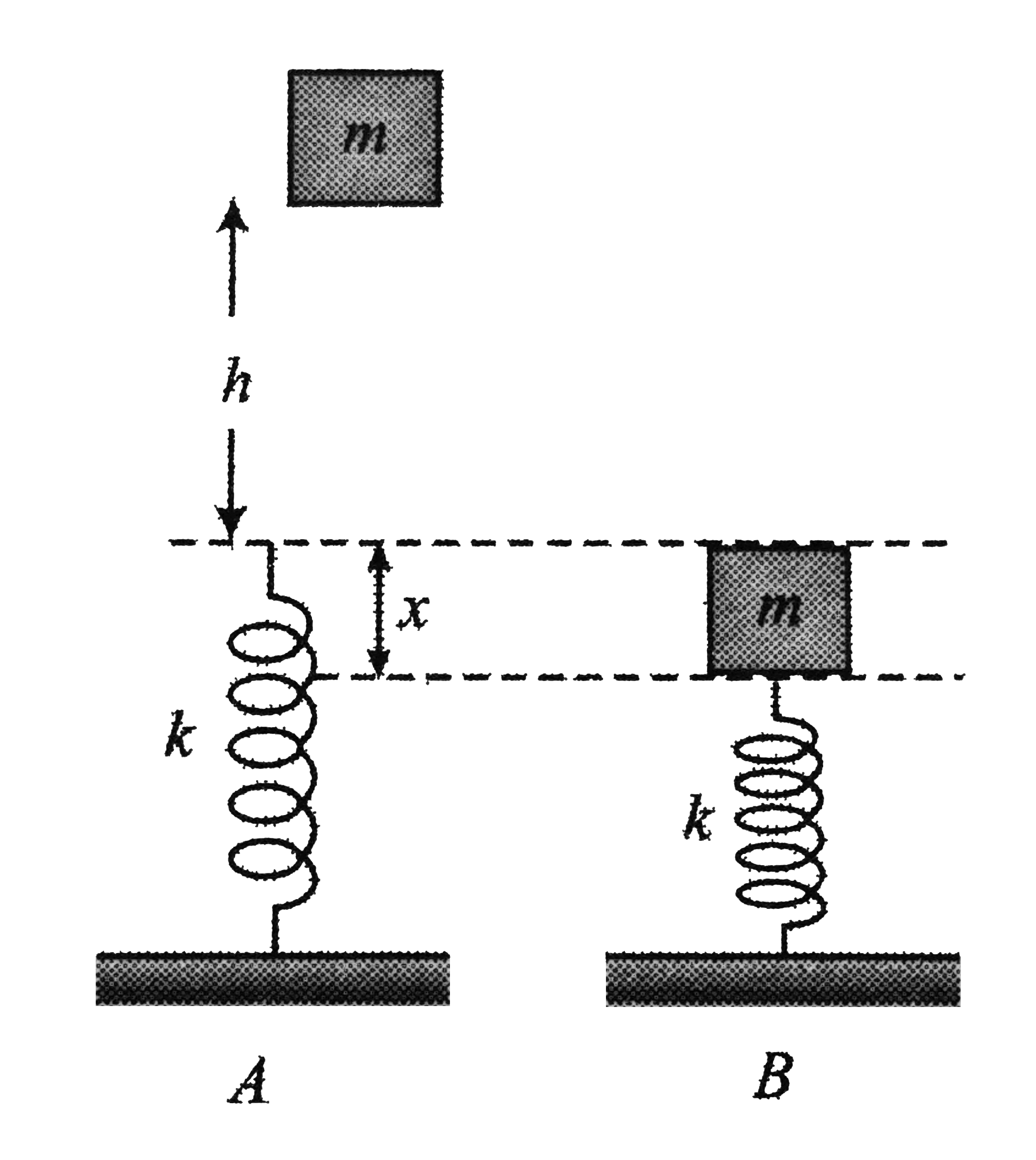 View Solution
View Solution

